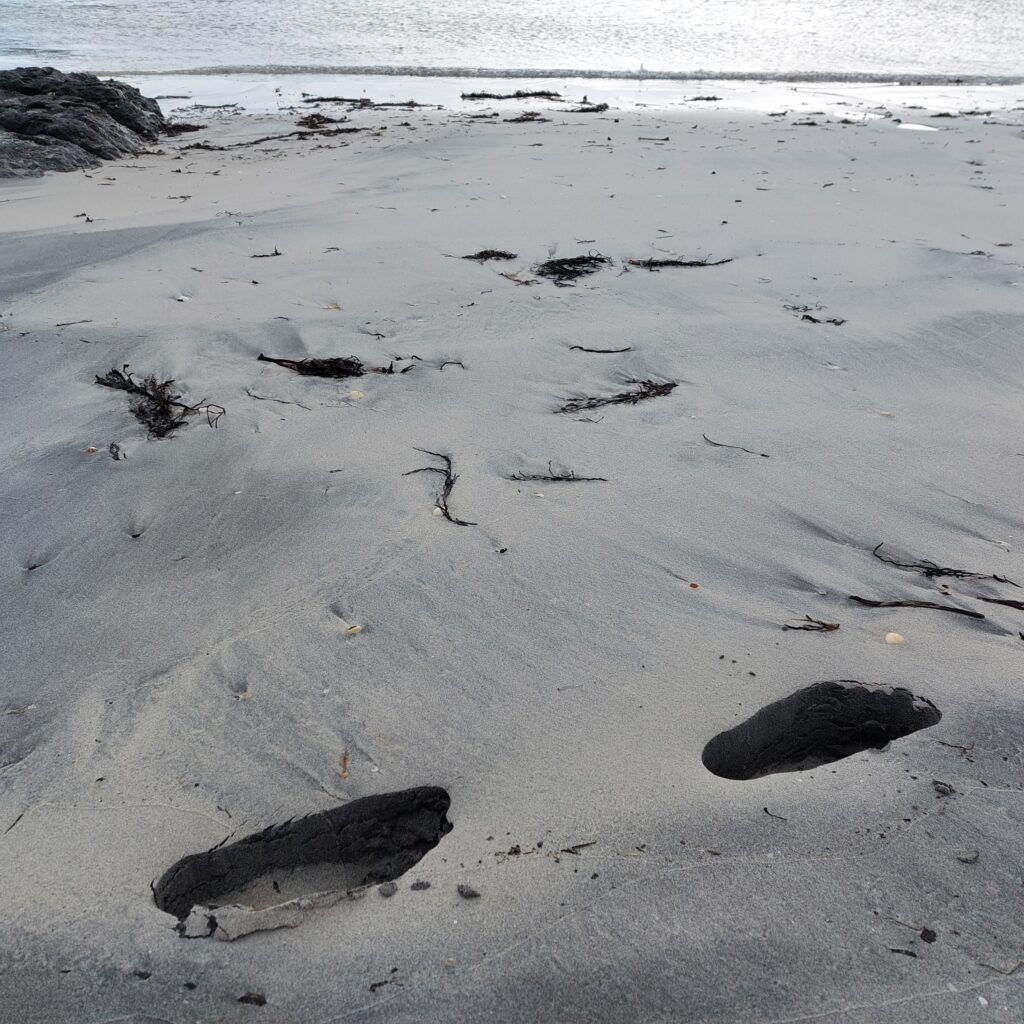At Inishmore, human remains have been found as far back as the Stone Age, and some of these remains are very easy to spot. The most impressive monument of them all is Dún Aonghasa, a Bronze Age fortress that was constructed around 1100 BC.

There are two explanations for the name. One is that it originates from the God Aengus, who plays a central role in 5 myths in Irish folklore. Aengus was associated with youth, love, summer and poetry. The other explanation is that the fort was built by King Aonghus Mac Úmhór, who led his people to the shores of Galway Bay and onto Inishmore after losing the war against Clann Chuian.

The fort consists of three sets of ring walls. The two outermost walls form a semicircle against the cliffs to the west. Between the two outermost walls a field of upright stones is planted, called ‘Chevaux de frise’, as a protection against invasion. The area is difficult to pass even today.

The innermost (and thickest) wall is believed to have been circular when it was first built, and also when it was restored some 1,500 years later (in the early Middle Ages). After collapsing into the sea, also the inner wall appears semi-circular today.

Dún Aonghasa was investigated archaeologically in 1992-95, and a number of interesting findings were made, including house foundations and Bronze Age graves. These islanders cultivated barley and oats. Compared to other Bronze Age settlements, the Aran population had more sheep and less cattle and pigs. The latter probably because the pig’s tendency to dig in the soil is not sustainable on islands with almost no soil at all. The menu was otherwise based on fish, shellfish and birds, especially guillemot, but great auk bones have also been found (extinct in Ireland some 3,000 years later, in 1835 and in the rest of the world some years later).

After a visit to Dún Aonghasa, time will be just right for both shopping, lunch and bathing.

This far into ‘County Wool‘, we were sure to find woolen hats and clothes to buy. But since Idun knits quite a lot herself, it is not interesting to buy knitted sweaters, and it doesn’t help that they are very, very, very beautiful. In these islands, each family has its own patterns, and ‘Aran knitting‘ is popular throughout all of Ireland. The typical ‘Aran Sweather’ dates from around 1900, and it used to be offwhite with textured pattern all over. This time tweed was what tempted us the most, and Idun found herself a nice hat, she thought. Knut, on the other hand – completely overwhelmed by the selection, didn’t find any new sixpence this time.

Finally we were ready for a bath, and Kilmurvey Beach a couple of km below Dún Aonghasa is absolutely perfect, also for swimming.

Here you will find fine, white sand, a bench to put your clothes on, and great swells that are fun to fight with, but not dangerous. A great bath!











